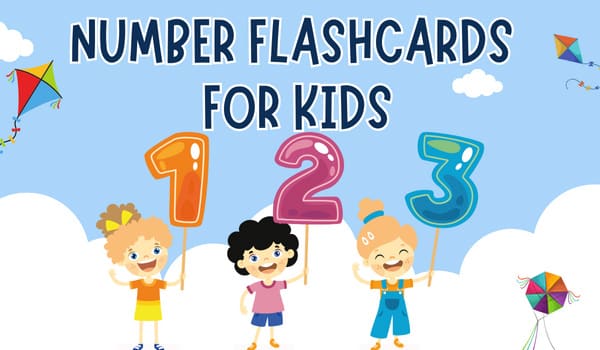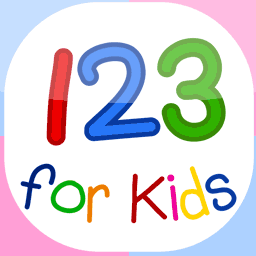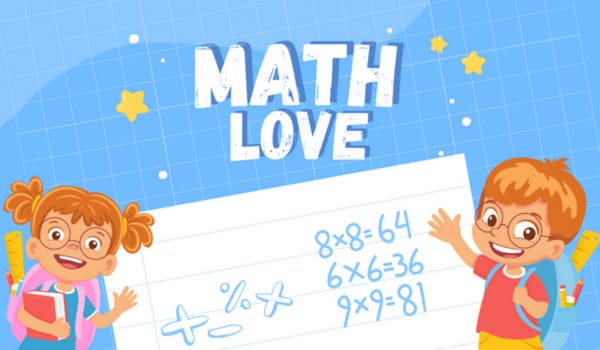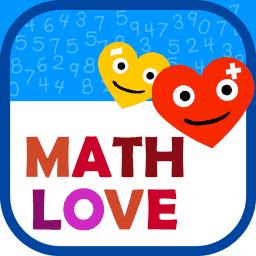Math is an essential skill every parent teaches their child. From as early as 0-3 years old. After that, it is a long journey of a lifetime. Involving ever-growing knowledge of math. The building foundation for a child to learn math ought to be strong. That is why parents, start so early. Today, we’ll enlist the development of math skills age by age in kids. Not only that but also what is the most effective method to teach them at a particular age. Along with which concept ought to be mastered by the kid at that age.
However, it is not an easy task. Especially for someone who struggled with it in school. I, for one wanted to know how it feels to ‘love or enjoy’ math. however, I did not. But, I knew where it was lagging and how to make math fun and enjoyable for kids. Since math is not an expressive subject. The answer is to the point. There are no ‘Ifs or Buts’ in math.
Development of Math Skills Age by Age.
General Development:
At 0-3 years of age:
A child understands concepts if they are represented to them in action. The following free app presents colorful 1 to 20 Numbers Flashcards and also has a rhythmic number song.
At 4 years of age:
A child learns concepts in an example-by-example way. The following app has a few Number Recognition Activities that provide the concept of numbers by example.
At 5 years of age:
- A child learns concepts through a particular example. The following example of playing Grocery for Kids teaches the concept of increasing and decreasing number values by adding and removing objects from the grocery bag. At 6-7 years of age
- A child learns concepts easily that are thought of in terms of rules. Addition and Subtraction Math Practice Worksheets App that keeps the kids busy learning the rules with fun.
- There is another technique “How do we Make Numbers” widely used in schools. The same concept is presented in the following app.
Representing And Symbolizing:
- At 0-3 years of age – At the age of 2 a child begins to develop mental representations including symbols of 1,2,3, and shapes.
- At 6- 7 years of age – A child represents and mentally ”undoes” a process.
Numbers:
Number Concepts:
- At 0-3 years of age – A child recognizes very small numbers, nonverbal, and then with numerical labels, such as two; at about age, represents numbers exactly; and begins to use the stable-order rule and even abstraction rule. Develops small counting.
- At 4 years of age – A child maintains the one-to-one rule. Understand that counting in an increasingly large collection. Understands the concept of the cardinal rule ( The last number represents the number of items there are).
- At 5-7 years of age – A child begins to count not just discrete objects but classes. for example, how many different colors of blocks there are, and units. For example, how many eggs are in the box.
Comparing Numbers:
- At-3 years of age – A child visually determines whether very small collections have the same amount or which has more.
- At 4 years of age – A child uses counting or matching to compare two collections of up to five objects, despite deceptive appearances.
- At 5 years of age – A child uses counting to compare two collections even if they contain objects that are a mixture of sizes and types.
- At 6-7 years of age – A child uses counting to accurately compare two collections, even if the collection with smaller numbers has larger sizes.
Addition And Subtraction:
- At 0-3 years of age – A child recognizes how many objects should be present when one is added or taken away from a very small collection.
- At 4 years of age – A child can solve a word problem, using objects, that sums up to 5.
- At 5-7 years of age – A child can solve a word problem using cutting-based strategies.
Geometry And Maps:
Shapes:
- At 0-3 years of age – A child matches similar shapes.
- At 4 years of age – A child recognizes and names variations of the circle, square, triangle, and rectangle.
- At 5 years of age – A child recognizes and names shapes in various orientations, sizes, and types. They also start recognizing the parts of shapes, such as sides and angles.
- At 6-7 years of age – A child starts to sort shapes into classes based on their attributes such as triangle has three straight lines.
Maps:
- At 0-3 years of age – a child understands the terms, above, under, below, beside or next to and between.
- At 4 years of age – A child begins to build a simple but meaningful map with the landscape, toys such as houses and trees. Learns a simple route.
- At 5 years of age – A child begins to place toy objects in the correct relative position to make a map of the classroom.
- At 6-7 years of age – A child can make follow maps of the familiar area using measurements.
Patterns And Algebra:
Patterns And Numbers Leading To Algebra:
- At 0-3 years of age – A child can act out a pattern such as jumping to the left or right. Observes repeating patterns, such as a block standing than lying down, then standing.
- At 4 years of age – A child learns to copy simple repeating patterns such as ABBABBABB.
- At 5 years of age – A child separates the ‘core unit’ in patterns, such as ABA in ABABABAABABAB. Finds patterns in math i.e, adding 1 to the number results in the number next.
- At 6-7 years of age – A child creates and recognizes and uses early algebraic patterns. for example, subtracting a number from itself gives zero.






